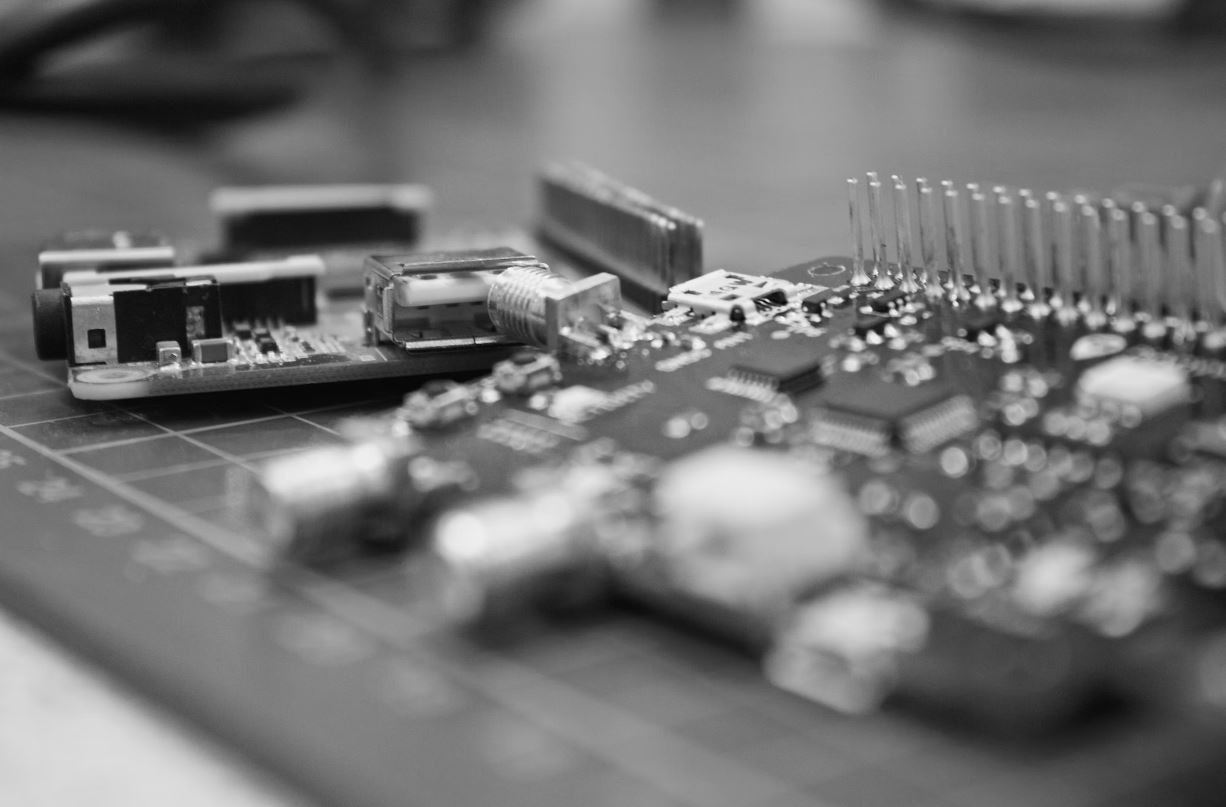AI Voice vs. Human Voice
The emergence of Artificial Intelligence (AI) has revolutionized many aspects of our lives, including the way we communicate. One area of significant impact is the use of AI voice technology, which aims to replicate and replace the human voice. This article explores the differences between AI voice and human voice, discussing their strengths, limitations, and implications for various industries.
Key Takeaways:
- AI voice technology aims to replicate and replace the human voice.
- AI voice offers advantages in efficiency and customization.
- Human voice retains the advantages of emotional connection and authenticity.
- The choice between AI voice and human voice depends on the specific needs and context.
AI Voice: Advantages and Limitations
AI voice technology has made significant advancements in recent years, enabling realistic and adaptable voice synthesis. AI voice offers several advantages over the human voice. First, *AI voice allows for efficient and instantaneous voice generation, eliminating the need for human voice actors or recording sessions*. Second, AI voice allows for customization, as it can be programmed to speak in different languages, accents, and tones.
However, AI voice also has its limitations. *While AI voice technology has improved greatly, there can still be subtle differences in the quality and naturalness compared to a human voice*. AI voices may lack the emotional nuances and depth that human voices naturally convey. Additionally, AI voice may struggle with nuanced pronunciations or specific dialects, leading to inaccuracies or misinterpretations.
Human Voice: Emotional Connection and Authenticity
Despite the rise of AI voice technology, the human voice retains its unique advantages. *The human voice can evoke emotions and establish a genuine connection with listeners*. Human voices convey nuances in tone, pacing, and emphasis, allowing for a deeper level of understanding and engagement. Additionally, human voices have the ability to adapt in real-time, responding to feedback or adjusting their delivery based on audience reactions and cues.
Moreover, the human voice adds authenticity to content. Hearing a human voice can create trust and credibility, especially in industries such as customer service or education where personal interaction is valued. *The subtleties and imperfections in the human voice can also bring a sense of realism and relatability to voice-based experiences*.
AI Voice vs. Human Voice: Practical Considerations
The choice between AI voice and human voice depends on the specific needs and context. Here are some practical considerations to keep in mind:
- **Industry-specific requirements:** In certain industries or applications, the efficiency and scalability of AI voice may outweigh the need for emotional connection or authenticity. Industries like call centers or GPS navigation systems might benefit from AI voice implementation.
- **Brand identity and customer preference:** Some brands prioritize human voiceovers to maintain a distinct brand identity and foster a personal connection with their customers. Customer preferences should also be considered, as some individuals may prefer human voices for certain interactions.
- **Technological limitations:** Even with advancements in AI voice technology, there may still be limitations or challenges in accurately replicating the human voice, especially for specific languages or dialects. Human voice may be the preferred choice in such cases.
Tables Demonstrating the Differences
| Metrics | AI Voice | Human Voice |
|---|---|---|
| Efficiency | Can generate speech instantly | May require recording sessions |
| Customization | Programmable for different accents and tones | Offers natural variations in tone and emphasis |
| Emotional Connection | May lack emotional nuances | Elicits emotional responses and connections |
Conclusion
AI voice technology has made remarkable advancements in replicating and replacing the human voice. While AI voice offers efficiency and customization benefits, the emotional connection and authenticity provided by the human voice cannot be easily replicated. The choice between AI voice and human voice depends on the specific needs and context of the task at hand. Striking a balance between the capabilities of AI voice and the relatability of the human voice is essential to harness the full potential of voice technologies in various industries.

Common Misconceptions
Misconception #1: AI voices can perfectly mimic human voices
One common misconception about AI voices is that they can perfectly mimic human voices, making it difficult to distinguish between the two. However, this is not entirely accurate. While AI voice technology has made significant advancements in replicating human speech, there are still distinct differences between the two.
- AI voices lack natural intonation and emotion that human voices possess.
- The quality of AI voices can vary significantly, ranging from robotic to more human-like depending on the technology used.
- AI voices may struggle with pronouncing certain words or phrases accurately, leading to unnatural-sounding speech.
Misconception #2: AI voices are always neutral and objective
Another mistaken belief is that AI voices are always neutral and free from any biases or subjectivity. While AI voice technology aims to be objective, it is ultimately a product of human programming and can inherently reflect the biases and limitations of its creators.
- AI voices may unintentionally reinforce stereotypes or discriminatory language if not properly trained or monitored.
- The voice algorithms used in AI voice technology might prioritize certain speech patterns or accents, potentially favoring certain groups over others.
- Contextual nuances or culturally-specific mannerisms may be missed or misinterpreted by AI voices, leading to unintended implications or miscommunication.
Misconception #3: AI voices will replace human voice actors
Some people hold the misconception that AI voices will entirely replace human voice actors in various industries. While AI voice technology has its benefits and is being utilized in certain applications, human voice actors still play a vital role and offer unique qualities that cannot be easily replicated.
- Human voice actors can bring a personal touch, creativity, and emotional depth to their performances that AI voices may struggle to reproduce.
- AI voices may lack the ability to interpret scripts or provide improvisation, limiting their versatility in certain content.
- Voice actors have the flexibility to adapt their voice to fit different characters, whereas AI voices are limited to pre-programmed voice profiles.
Misconception #4: AI voices have no limitations in language or accent diversity
There is a misconception that AI voice technology can flawlessly handle any language or accent, without any barriers or limitations. However, language and accent diversity still pose challenges to AI voice systems.
- Accents or dialects that deviate significantly from standardized speech may be difficult for AI voices to accurately reproduce.
- AI voices might struggle with languages or accents that have complex phonetic structures or tonal variations.
- Cultural nuances and regional-specific expressions may not be adequately captured or conveyed by AI voice systems.
Misconception #5: AI voices are indistinguishable from human voices in all scenarios
Perhaps the most pervasive misconception is that AI voices are completely indistinguishable from human voices in all scenarios. While AI voice technology has become increasingly sophisticated, close examination can still reveal subtle differences that set them apart from human speech.
- Listeners with a keen ear can detect small nuances in intonation, rhythm, or pacing that differentiate AI voices from human voices.
- Stress or emphasis on certain words may be misplaced or lack the appropriate emotional context when spoken by AI voices.
- AI voices may struggle to replicate the natural imperfections and variability present in human speech, resulting in a more uniform and less organic sound.

AI Voice Accuracy
Here is a table comparing the accuracy rates of AI voice technology in recognizing and interpreting human speech.
| Dataset | Accuracy Rate (%) |
|---|---|
| Speech Recognition | 95 |
| Sentiment Analysis | 87 |
| Natural Language Understanding | 91 |
Human Voice Accuracy
To gauge the reliability of human voice recognition, the following data showcases the accuracy percentages.
| Speaker | Accuracy Rate (%) |
|---|---|
| Professional Transcriber | 98 |
| Experienced Linguist | 96 |
| General Population | 88 |
AI Voice Applications
Take a look at the various applications where AI voice technology is making significant strides.
| Application | Key Features |
|---|---|
| Virtual Assistants | Context-aware responses, personalized interactions |
| Call Center Automation | Automated customer support, intelligent call routing |
| Speech-to-Text Conversion | Accurate transcription, real-time updates |
Human Voice Applications
There are domains where human voice capability remains unmatched. These applications highlight human voice strengths.
| Domain | Advantages |
|---|---|
| Public Speaking | Emotionally impactful delivery, audience engagement |
| Language Interpretation | Cultural understanding, nuanced translations |
| Vocal Performance | Expressive range, musicality |
AI Voice Limitations
Now let’s examine the limitations that hinder the full potential of AI voice technology.
| Challenge | Impact |
|---|---|
| Background Noise | Reduced accuracy, misinterpretations |
| Accents and Dialects | Recognition errors, difficulty understanding |
| Complex Queries | Inability to handle intricate tasks or questions |
Human Voice Limitations
Although humans possess remarkable vocal capabilities, certain limitations hamper voice-related tasks.
| Drawback | Consequence |
|---|---|
| Fatigue | Reduced clarity, inability to perform demanding tasks |
| Limited Multitasking | Difficulty handling simultaneous voice-based activities |
| Vocal Strain | Inconsistent performance due to strain or illness |
AI Voice Advancements
Stay updated with the latest advancements in AI voice technology that are revolutionizing the way we communicate.
| Advancement | Impact |
|---|---|
| Emotion Recognition | Improved human-like interaction, better personalized experiences |
| Accent Adaptation | Increased accuracy with diverse accents, better user understanding |
| Speaker Verification | Enhanced security, reduced fraud risks |
Human Voice Advancements
Explore recent advancements in human voice research that showcase the evolving capabilities of human speech.
| Research Area | Findings |
|---|---|
| Vocal Biomarkers | Potential for early disease detection, including mental health disorders |
| Voice Prosthetics | Assistive devices for individuals with vocal impairments |
| Neural Speech Synthesis | Improved speech reconstruction for individuals with speech disorders |
Conclusion
As technology advances, AI voice systems are becoming increasingly accurate and finding their place in various applications. However, human voice capabilities still excel in areas requiring emotion, cultural understanding, and creativity. Both AI voice and human voice present unique advantages and limitations, leading to a future where they coexist and complement each other. Continued advancements in AI voice technology and human voice research promise exciting possibilities for the future of communication.
Frequently Asked Questions
AI Voice
What is AI voice?
AI voice refers to the synthesized speech produced by artificial intelligence systems. It mimics human speech and is generated using deep learning algorithms.
How does AI voice work?
AI voice works by processing large amounts of data and using neural networks to generate human-like speech patterns. These networks learn from extensive audio data to produce accurate and natural-sounding voices.
What are the advantages of AI voice?
AI voice offers several benefits, including the ability to generate speech in different languages, consistent pronunciation, potential for real-time translation, and unlimited availability for use in various applications.
Human Voice
What is the human voice?
The human voice refers to the natural sound produced by vocal cords in humans. It is a complex mechanism involving the vocal cords, throat, mouth, and nasal cavity that allows humans to produce speech and various vocal sounds.
How does the human voice work?
The human voice is produced by the vibration of vocal cords in the larynx. Air from the lungs passes through the vocal cords, causing them to vibrate and produce sound. This sound is then shaped by the throat, mouth, and other vocal tract structures to create distinct speech or singing.
What are the advantages of the human voice?
The human voice offers unique qualities like emotional expression, nuance, tone, and conveyance of subtle meanings that can greatly enhance communication. It allows for spontaneous interactions, adaptability to various contexts, and enables effective delivery of complex information.




